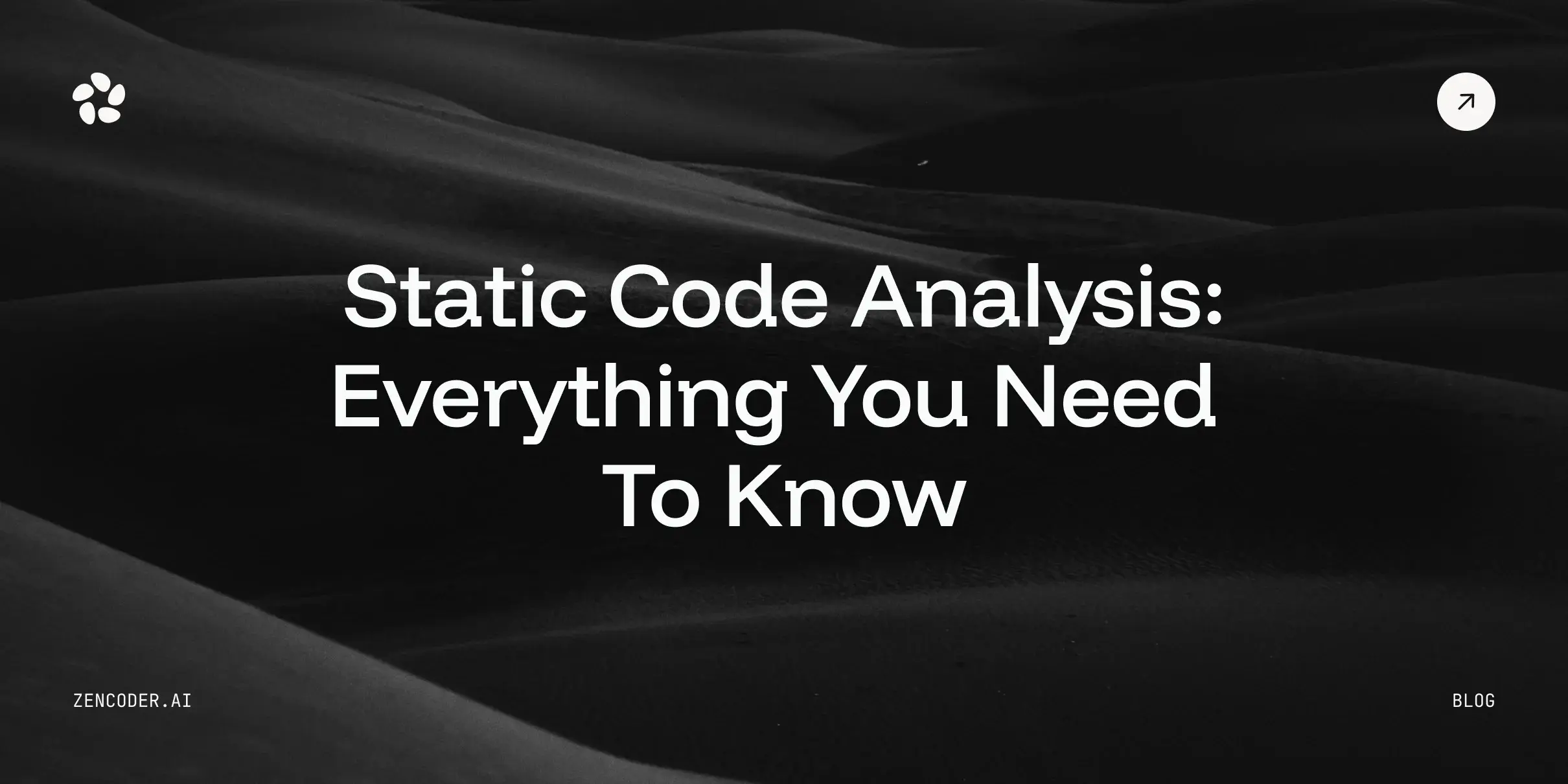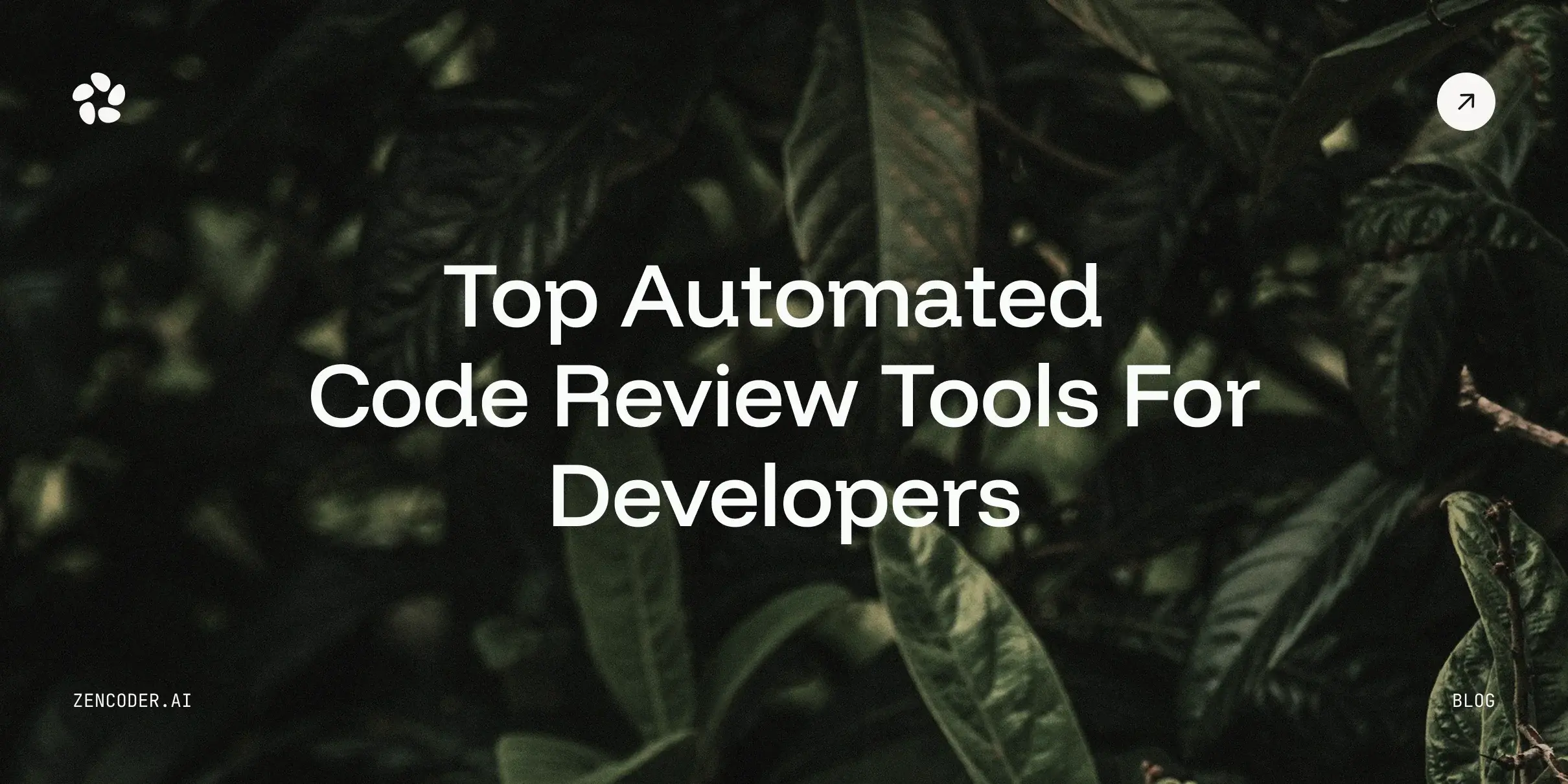Do you keep hitting a wall with linear programming problems, finding it hard to turn real-world scenarios into mathematical models, or getting tangled in constraints and objective functions? It’s frustrating when you know the formulas but still can’t reach the right solution, especially when every step feels like a guess. That constant uncertainty can make even simple problems feel like dead ends. In this article, we will break down the 6 essential steps on how to solve linear programming problems with clarity and confidence!
Make Coding a Craft, Not a Chore
Zencoder AI Agents take on the repetitive and mundane work helping you stay in the zen state.
What is Linear Programming?
Linear Programming (LP) is a mathematical technique used to determine the optimal outcome in situations where relationships between factors are linear. Simply put, it's a way to maximize or minimize something, such as profit or cost, while working within a set of rules or limits, like available resources.
Benefits of Linear Programming
Before we dive into how to solve linear programming problems, it's important to understand the key benefits of LP:
- Enables optimal resource allocation – LP helps organizations use limited resources like materials, labor, and budget in the most efficient way to maximize output or minimize cost.
- Supports better decision-making – Provides decision-makers with clear insights into trade-offs and constraints, enabling them to make informed strategic and operational choices.
- Solves complex problems effectively – LP can handle problems with many variables and constraints that are too complex for trial-and-error methods, making it ideal for areas such as scheduling, logistics, and network design.
- Adapts easily to change – LP models are easily updated with new data or conditions, making them ideal for scenario planning and adapting to changes.
Key Components of a Linear Programming Problem
A linear programming problem has several key components that help define the structure and guide the process of finding the best possible solution:
- Decision variables – Decision variables are the unknowns we aim to determine in a linear programming problem. They represent the choices to be made, such as the number of units of each product to produce.
- Objective function – The objective function is a linear expression that defines the goal of the problem, such as maximizing profit or minimizing cost. It combines decision variables with coefficients, for example: Maximize Z = 50x + 30y.
- Constraints – Constraints are the restrictions or requirements the solution must meet, typically expressed as linear inequalities or equalities. They limit the possible values of decision variables, like 5x + 3y ≤ 60, to reflect resource availability.
- Non-negativity – In most practical scenarios, decision variables cannot be negative, since negative quantities often don't make sense. Therefore, linear programming problems usually include non-negativity constraints, such as x ≥ 0 and y ≥ 0.
6 Steps to Solve Linear Programming Problems
Solving a linear programming problem involves a clear, step-by-step process, from formulating the problem to finding and interpreting the solution. This approach ensures the problem is modeled accurately and the appropriate methods are used to solve it effectively.
Step 1: Identify the Decision Variables
The first step is to clearly identify your decision variables. Ask yourself: “What are the unknowns I need to decide to achieve my objective?” and define descriptive symbols for each of these unknowns. For example, in a production mix problem, you might define:
- x = number of tables to produce.
- y = number of chairs to produce.
Each variable should represent a specific, measurable decision and include a clear interpretation or unit (like “number of units” or “hours worked”). In more complex problems, there could be dozens or even hundreds of decision variables, such as x₁, x₂, ..., x₁₀₀, but the process is the same.
📌 Note
By clearly naming and describing your decision variables, you set the stage for the rest of your model. All other components (the objective function and constraints) will be built using these variables. It’s a good habit to include a short explanation for each one to keep your model understandable and well-organized.
Step 2: Formulate the Objective Function
Now that you've identified your decision variables, the next step is to express the goal of the problem using those variables. This goal (what you're trying to maximize or minimize) is called the objective function. The objective function is written as a linear expression involving your decision variables. It shows how each variable contributes to the overall outcome.

Maximization Problem
If you're trying to maximize something like profit, revenue, output, or efficiency, the function might look like this: Maximize Z = c₁x₁ + c₂x₂ + ... + cₙxₙ. In this function:
- Z is the total value you're trying to maximize.
- x₁, x₂, ..., xₙ are your decision variables.
- c₁, c₂, ..., cₙ are the contributions (coefficients) of each variable to the total.
For example, if each table generates a $50 profit and each chair generates a $30 profit, and you let x represent the number of tables and y represent the number of chairs, then the objective function would be: Maximize Z = 50x + 30y.
Minimization Problem
If you're trying to minimize something like cost, time, or waste, you would write: Minimize Z = c₁x₁ + c₂x₂ + ... + cₙxₙ.
For instance, if each unit of activity x costs $8 and each unit of activity y costs $5, and your goal is to minimize total cost, then the objective function would be: Minimize Z = 8x + 5y.
📌 Note
To properly define your objective function, you should keep the following key points in mind:
- The objective function must be linear: no variables multiplied together, and no exponents.
- Make sure you clearly identify whether your goal is to maximize or minimize.
- Use coefficients that accurately reflect how each variable impacts the goal (e.g., cost per unit, profit per item).
Step 3: Define the Constraints
After writing your objective, the next step is to identify and list all the constraints that limit the values your decision variables can take. These constraints usually come from factors such as limited resources, business rules, or specific requirements.
Each constraint is typically written as a linear inequality (or sometimes an equality) involving your decision variables. The general form looks like this: a₁x₁ + a₂x₂ + ... + aₙxₙ ≤ b.

This format means that the total amount (a combination of your variables) must be less than or equal to a specified limit, such as available resources. You may also use:
- ≥ for minimum requirements.
- = for exact values or balance conditions.
For example, if each table uses 5 units of wood and each chair uses 3, and you have at most 60 units of wood, your function will look like this: 5x + 3y ≤ 60.
Step 4: Apply Non-negativity Restrictions
In most linear programming problems, it’s essential to include non-negativity constraints to ensure that decision variables cannot take on negative values unless specifically allowed. This reflects real-world situations: you can't produce a negative number of products or allocate a negative quantity of resources.
These constraints are simple to express:
- x ≥ 0
- y ≥ 0
Including non-negativity constraints ensures that your solution is realistic and feasible, and it is a required part of the standard form used in many solution methods, such as the simplex algorithm.
Step 5: Choose a Solution Method (Graphical, Algebraic, or Computational)
Now that your LP model is defined, it’s time to explore linear optimization methods for finding the best solution. The method you use to solve the problem depends largely on how complex or large the problem is. You can choose from:
Graphical Method (for Two Variables)
When a problem has only two decision variables, it can be solved using a graph. To do this, you:
- Plot all the constraint lines on a coordinate plane.
- Shade the region that satisfies all the constraints. This is called the feasible region.
- Find the point in this region that gives the best value for your objective (either maximum or minimum).

The solution will always lie at one of the corners (also called vertices) of the feasible region. You can either test each corner point or slide the objective line across the graph until it just touches the last possible point in the region, showing your optimal solution. This method is great for visualizing and understanding how linear programming works, but it only applies to problems with two variables.
Algebraic Method (Simplex Algorithm)
For larger problems with numerous variables or constraints, the Simplex method is a common and powerful approach to finding the optimal solution. Instead of graphing, Simplex uses an algebraic, step-by-step approach to move from one corner (or vertex) of the feasible region to another, always improving the result at each step.

Even though the feasible region might be in many dimensions, Simplex doesn’t need to check every point. It cleverly follows a path along the edges and quickly finds the best solution. The process is often time-consuming and complex, which is why the Simplex method is typically performed using computer software that can efficiently handle thousands of variables in real-world scenarios.
Computer Solvers and Libraries
One of the most common methods for solving linear programming (LP) problems is the use of computer-based tools. There are many powerful solvers that can handle these problems efficiently using algorithms like the Simplex method or interior-point methods.
Popular tools include Google OR-Tools (with its GLOP solver), COIN-OR’s CBC, and commercial options like Gurobi and CPLEX. If you prefer working in programming languages like Python, there are user-friendly libraries such as PuLP, SciPy, and Pyomo.
Step 6: Solve the Linear Program and Find the Optimal Solution
Now it’s time to solve the model and obtain the optimal values of the decision variables. If you’re doing this manually for a small problem, you might substitute corner-point values or run the simplex algorithm by hand. Given the formulated model from the previous steps, feed it into your chosen solver or tool. The solver will apply the algorithm internally and return the optimal solution (if one exists).
To demonstrate, we will solve our example using Python. Below is a code snippet using PuLP (a Python linear programming library) to maximize profit for the tables and chairs example:

In this code, we defined the LP with PuLP: we set up the decision variables x and y (both ≥ 0), added our objective (50*x + 30*y), and added three constraints exactly as formulated earlier. After calling model.solve(), the solver finds the optimal solution. In this example, the output will indicate:
x = 8.0, y = 6.0, Max Profit = 580.0
How Zencoder Enhances the Linear Programming Workflow
Now that you know how to solve linear programming problems, you understand that they require precise modeling, iterative refinement, and the use of programming tools to build and optimize mathematical models. That's exactly where Zencoder can help you!

Zencoder is an AI-powered coding agent that enhances the software development lifecycle (SDLC) by improving productivity, accuracy, and creativity through advanced artificial intelligence solutions. Whether you're writing custom code, debugging legacy software, or solving complex LP models, Zencoder’s intelligent tools are designed to accelerate your workflow.
Leveraging its proprietary Repo Grokking™ technology, Zencoder thoroughly analyzes your entire codebase, identifying structural patterns, architectural logic, and custom implementations. This deep, context-aware understanding allows Zencoder to provide precise recommendations, significantly improving code writing, debugging, and optimization.
Make Coding a Craft, Not a Chore
Zencoder AI Agents take on the repetitive and mundane work helping you stay in the zen state.
Zencoder integrates with your existing development tools and supports over 70 programming languages, including C#, Python, Java, JavaScript, and more, and works effortlessly with popular IDEs like Visual Studio Code and JetBrains.
Here are some of Zencoder’s key features to help you:
1️⃣ Integrations – Zencoder integrates with over 20 developer environments, streamlining the entire development lifecycle. This makes it the only AI coding agent offering this depth of integration.
2️⃣ Coding Agent – Zencoder takes the hassle out of tedious debugging and complex refactoring. This intelligent assistant helps you move faster and work smarter across multiple files by:
- Quickly spotting and fixing bugs, cleaning up broken code, and smoothly handling tasks across your entire project.
- Automating repetitive or complex workflows (including those involved in solving LP models) to save you time and effort.
- Accelerating full app development so you can focus on the creative, high-impact work that truly matters.
3️⃣ Chat Assistant – Receive instant, reliable answers and personalized coding support. Stay productive with intelligent recommendations that keep your workflow smooth and efficient.
4️⃣ All-in-One AI Coding Assistant – Accelerate your development workflow with an integrated AI solution that delivers intelligent code completion, automatic code generation, and real-time code reviews.
- Code Completion – Smart code suggestions keep your momentum going with context-aware, accurate completions that reduce errors and enhance productivity.
- Code Generation – Produces clean, consistent, and production-ready code tailored to your project’s needs, perfectly aligned with your coding standards.
- Code Review Agent – Continuous code review ensures every line meets best practices, catches potential bugs, and improves security through precise, actionable feedback.
5️⃣ Zen Agents – Fully customizable AI teammates that understand your code, integrate seamlessly with your existing tools, and can be deployed in seconds.

With Zen Agents, you can:
- Build smarter – Create specialized agents for tasks like pull request reviews, testing, or refactoring, tailored to your architecture and frameworks.
- Integrate fast – Connect to tools like Jira, GitHub, and Stripe in minutes using our no-code MCP interface, so your agents run right inside your existing workflows.
- Deploy instantly – Deploy agents across your organization with one click, with auto-updates and shared access to keep teams aligned and expertise scalable.
- Explore marketplace – Browse a growing library of open-source, pre-built agents ready to drop into your workflow, or contribute your own to help the community move faster.
6️⃣ Multi-Repo Search – Index and search across multiple repositories so AI agents can understand and navigate complex multi-repo architectures. Easily add and manage repositories through the web admin panel, enabling agents to access and query all indexed code when needed.
7️⃣ Zentester – Zentester uses AI to automate testing at every level, so your team can catch bugs early and ship high-quality code faster. Just describe what you want to test in plain English, and Zentester takes care of the rest, adapting as your code evolves.
Here is what it does:
- Our intelligent agents understand your app and interact naturally across the UI, API, and database layers.
- As your code changes, Zentester automatically updates your tests, eliminating the need for constant rewriting.
- From individual unit functions to full end-to-end user flows, every layer of your app is thoroughly tested at scale.
- Zentester’s AI identifies risky code paths, uncovers hidden edge cases, and generates tests based on how real users interact with your app.
Sign up free today to streamline your LP models, accelerate linear optimization workflows, and let Zencoder do the heavy lifting.

![9 Stackblitz Alternatives to Consider [2026 Comparison List]](https://zencoder.ai/hubfs/Cover-Dec-16-2025-01-04-58-6323-PM.webp)

